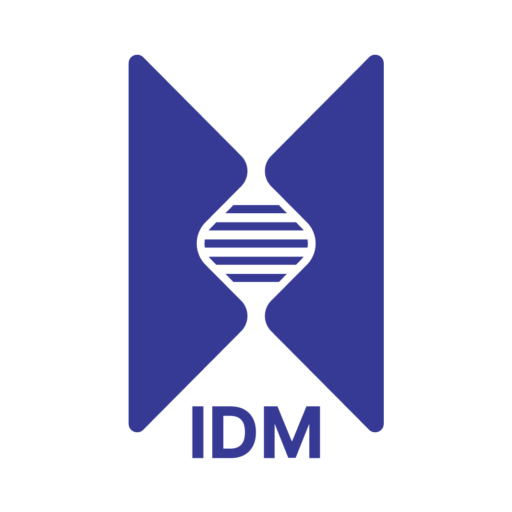*This is a translated version of the Op-Ed that was originally published in Albanian in Gazeta Shiptare on 18 June 2020.
Author: Armela Xhaho
Over the past two years, Albania has faced an increased influx of asylum seekers and irregular immigrants using Albania as a transit route to EU countries. In the last two weeks of February 2020, almost 650 foreigners were apprehended in Albania for the first time, out of which 1/3 lodged an asylum application. Moreover, during 2019, a total number of 12,000 foreign nationals have been intercepted in Albania, and around half of them applied for asylum (6678), which is almost 11 times higher than in 2017. Regarding the countries of origin, the vast majority of migrants came from Syria, followed by other nationals from Iraq, Pakistan, Morocco, Algeria, Libya, Palestine, and Afghanistan. The most-followed corridor is the arrival through the green border with Greece and mainly through the border crossing points in Kapshtica and Kakavija. New trends of illegal entrances are also observed at other border crossings points such as Konispol / Saranda and Carshovë / Përmet. Although statistics show a significant increase in the number of migrants, Albania is not yet considered a final destination country for asylum seekers. These migratory movements are generally of a transitory nature, as Albania is mostly used as a transit corridor towards Montenegro, Bosnia and Herzegovina, or Croatia, with final destination EU countries.
With such a large influx of migrants within a short period of time, there is the possibility of massive migratory flows, which could put the Albanian authorities in the face of an emergency situation which certainly requires a quick response. Although these flows are unpredictable, the global refugee crisis has taught us that we may be unprepared for such a situation, where the asylum system itself can be overcrowded and immigrants can quickly fall prey to aggressive attacks by the native population or xenophobic slogans for populist parties.
But how does the refugee crisis affect Albania and how prepared are our authorities in managing these flows? First, if we refer to the situation globally, the refugee resettlement scheme in EU countries has long failed as pact, as many EU countries rejected the quota system that assumed a fair redistribution of refugees. Certainly, the biggest burden has fallen on Balkan countries like Greece, which has faced an unprecedented increase in refugees since Turkey opened the border. Greece counts about 96,500 irregular migrants for 2019, and even more are expected for 2020. In these conditions and without an alternative solution, it is possible these migratory flows deviate from Greece to Albania.
Do our institutions have the right infrastructure or legal framework to cope with these massive migratory flows?
In general, Albania has done further efforts to improve the legal and institutional framework in terms of asylum. The Asylum Law has been amended and is currently being approved by the Assembly. This draft law is partially aligned with the directives of the European Council and Parliament, such as the Minimum Standards for the provision of temporary protection in cases of mass flows as well as the standards and procedures for granting and rejecting international protection which includes: refugee status and complementary protection. According to this draft law, the procedure for determining the status of international protection, as a rule, lasts 6 months from the time an asylum request is made and can be extended up to 3 months if additional procedures are necessary. Although this procedure is in line with the EC Directive on Asylum Procedures, many countries apply a shorter timeframe. For example, the Netherlands proceeds for 8 days, Switzerland for 2 weeks, Italy for 30 days.[1] The new asylum system may be overcrowded with the new migratory flows, creating undue pressure to address the most urgent needs. Therefore, it is important to consider the acceleration of asylum procedures in order to address asylum applications in a timely manner. Also, the 2019-2022 Migration Strategy envisages the drafting of a contingency plan, including an operational plan that covers response activities, which should be updated every 6 months. In order to guarantee a more comprehensive and transparent approach, this plan must first be widely consulted with the main stakeholders and made public available.
Referring to the current situation, the main difficulty is related to the timely fulfillment of the asylum seekers and irregular immigrants’ requirements, in order to fully guarantee their rights.
This difficulty is exacerbated by the mix mass flows. Albania’s hosting capacities to cope with even low migration flows are limited, mainly due to insufficient resources, both in terms of infrastructure and human resources. Here we can single out some challenges that are mainly related to the mechanisms of identification and referral of migrants. Some of the challenges we can mention are: 1) Limited capacities of the Albanian authorities, for the identification and provision of services for migrants and asylum seekers on a large scale. In practice, there are still challenges in guaranteeing the right to free legal aid and translation in the native language; 2) Identification and timely referral of persons with special needs or vulnerable groups (eg. unaccompanied minors, victims (potential) ) trafficking, abused women and people with disabilities). Better collaboration and coordination of work between local or central structures involved in this process is needed; 3) Challenges in the identification of networks that could pose a potential security threat or even groups of smugglers that enable or facilitate illegal border crossings.
In general, many irregular migrants want to reach EU countries. Under these conditions, smuggling networks organize their travel to EU countries. These structures may use information technology and social media to facilitate illegal border crossings. Such initiatives and organizations are for example “The Caravan of Hope” that facilitated the passage of Syrian and Iraqi immigrants from Turkey to Greece, or another group such as “The Glitter of Hope”, which aims to assist migrants in passing illegally from Greece to Central Europe, through the western Balkan countries.
The next challenge has to do with hosting capacity to receive high mixed migratory flows. Although the reception capacities has increased recently, they are still not at the optimal level and mainly along the border crossing points. The reception facilities consist of a national reception center for asylum seekers in Babrru with 180 beds, which is operating at its maximum capacity; 1 closed center for irregular migrants in Tirana / Karreç (150 beds); 3 temporary reception centers in Gërhot / Gjirokastër, Kakavija / Gjirokastër, Kapshtica / Korca; and a shelter in Gjirokastër. With an ever-increasing influx, it is necessary to strengthen the hosting capacities, either in improving the infrastructure of current centers or in setting up new reception centers or camps to provide temporary accommodation and access to basic services.
Although full harmonization of regulatory framework is needed to meet the EU standards, the biggest challenge lies in the implementation of the law and the limited infrastructure to meet the legal obligations.
Europe found itself facing a major challenge to properly cope with the exodus of refugees, as often times the measures taken have been within an individual rather than a collective response.
Given that the situation in the region in terms of migratory flows remains fluid and extreme measures such as continuous border fortification have direct consequences on migrant’s mobility, it is important for our authorities to fast track the asylum procedures and take the necessary measures in order to address in time these massive flows, which are already seen as real threat referring to the situation in Greece or in the region.
[1] https://www.ecre.org/wp-content/uploads/2016/10/AIDA-Brief-DurationProcedures.pdf



